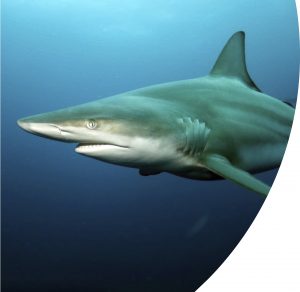Mariah Livernois – Texas A&M Galveston
Abstract: As predators, coastal and oceanic sharks play critical roles in shaping ecosystem structure and function, but most shark species are highly susceptible to population declines. Effective management of vulnerable shark populations requires knowledge of species-specific movement and habitat use patterns. Since sharks are often highly mobile and long-lived, tracking their habitat use patterns over large spatiotemporal scales is challenging. However, the analysis of elemental tracers in vertebral cartilage can describe a continuous record of the life history of an individual from birth to death. This study examined trace elements (Li, Mg, Ca, Mn, Zn, Sr, and Ba) along vertebral transects of five shark species with unique life histories. From most freshwater-associated to most oceanic, these species include Bull Sharks (Carcharhinus leucas), Bonnethead Sharks (Sphyrna tiburo), Blacktip Sharks (C. limbatus), Spinner Sharks (C. brevipinna), and Shortfin Mako Sharks (Isurus oxyrinchus). Element concentrations were compared across life stages to infer species-specific ontogenetic patterns of habitat use and movement. Bull Sharks exhibited clear ontogenetic changes in elemental composition matching expected changes in their use of freshwater habitats over time. Bonnethead Shark elemental composition did not differ across ontogeny, suggesting residence in estuarine/coastal regions. The patterns of elemental composition were strikingly similar between Spinner and Blacktip Sharks, suggesting they co-occur in similar habitats across ontogeny. Mako shark elemental composition was mostly stable over time, but some ontogenetic shifts occurred that may be due to changes in migration patterns with maturation. The results presented in this study enhance our understanding of the habitat use and movement patterns of coastal and oceanic sharks, and advance the utility of vertebral chemistry as a tool for examining shark life history traits.
© 2025 Jackson School of Geosciences, The University of Texas at Austin


